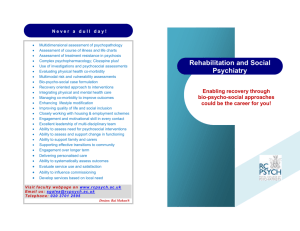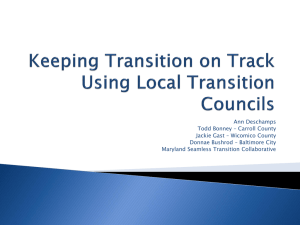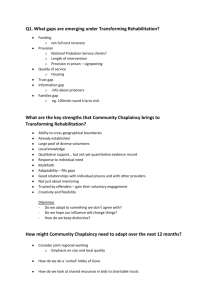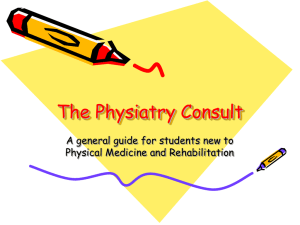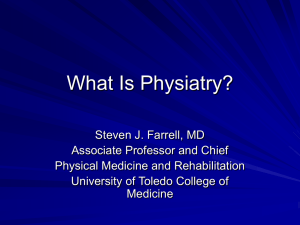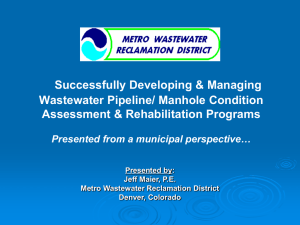NDRIC Pilot Summary - Canal Communities Local Drug Task Force
advertisement
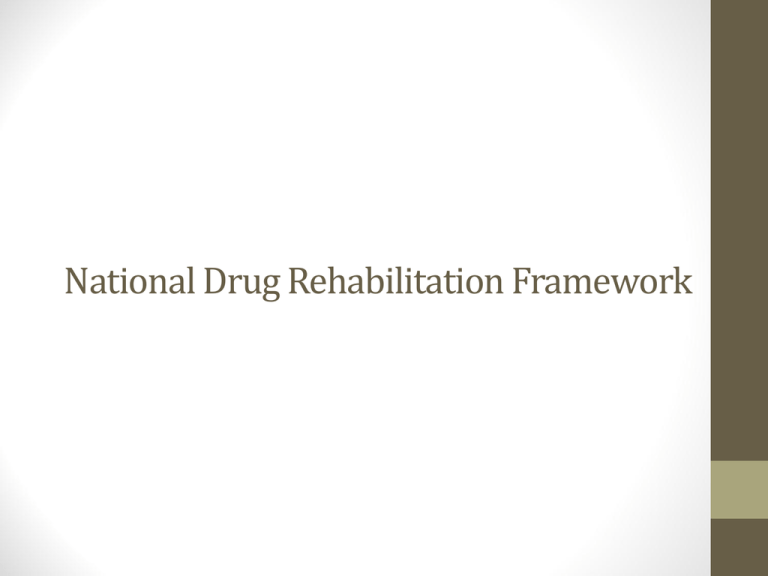
National Drug Rehabilitation Framework NDRIC and the Framework • The National Drugs Rehabilitation Implementation Committee (NDRIC) was set up to develop a national drugs rehabilitation framework. • This new Rehabilitation Framework is a collection of policies and procedures designed to help agencies work together to form effective integrated care pathways for service users. How can it help? • Providing standardised approaches to • Identifying service users’ needs • Effective Care Plan development and on-going support • Working with other agencies and resolving gaps and blocks • Establishing an integrated care pathway for Service Users • How the continuum of care works and how we’re all involved in it Integrated model of rehabilitation provision Four Tier System • Tier 1 interventions drug-related information and advice, screening and referral to specialised services. • Tier 2 interventions through outreach, primary care, pharmacies, criminal justice settings, drug treatment services, community- or hospital-based brief interventions and harm reduction e.g. needle exchange. • Tier 3 interventions Typically includes psychotherapeutic interventions, methadone maintenance, detoxification and day care. • Tier 4 interventions Acute hospital provision with specialist “addiction” support for complex needs e.g. pregnancy, liver and HIV-related problems, residential rehabilitation units Six Protocols The Rehab Framework is divided into six main headings called Protocols. Protocols give us a detailed guide in how to approach our work with service users and includes a number of agreed policies & procedures, and templates. The six protocols are: 1. 2. 3. 4. 5. 6. Initial Assessment Comprehensive Assessment Referrals Interagency Care Plan Meetings Gaps and Blocks Confidentiality Protocol 1 Initial Assessment and Matching the Service User to the Most Appropriate Service 1. 2. 3. How to conduct the brief assessment of the service user’s presenting issues Determine whether a more comprehensive assessment is necessary How to refer (if necessary) the service user to another more appropriate service Protocol 2 Comprehensive Assessment & Developing Interagency Care Plans 1. 2. 3. 4. How to complete the comprehensive assessment How to develop and put the care plan into action Identifying a case manager Continually review and update care plans Protocol 3 Referral between Agencies 1. 2. 3. How to support service users access to relevant services set out in the care plan Establish a clear understanding for service users and providers of each step in any referrals process Support service users at each step of the referral process and follow-up Protocol 4 Interagency Care Plan Meetings 1. 2. 3. Updating the care plan according to the service user’s current needs Keeping the service user motivated and involved Enhancing interagency work and involvement in the care plan Protocol 5 Gaps and Blocks 1. Identify and address gaps or blocks in the service user’s progression set out in the care plan Protocol 6 Confidentiality and Information Sharing 1. How to ensure the service user’s confidentiality and right to privacy 2. How to fully inform and get consent from the service user about using and sharing care plan information 3. 4. How to confidentially share info with other service providers in accordance with national legislation Agree interagency care plan roles and responsibilities 5. Agree ways to resolve disagreements 6. Rehab coordinator is given these agreements to be assessed for Data Protection Compliance Key Worker’s Tasks Engaging with the service user Ensuring consent Completing assessment and developing a care plans Advocating on behalf of service user Fulfil care plan actions Work & sharing info with other agencies as required Keeping relevant case notes/records Use SMART Objectives Case Manager’s Tasks The case manager is the person who has a formal role to manage inter-agency communication and the provision of coordinated care. Ensuring a care plan SMART goals in place Arranging regular care plan & progression reviews Coordinate with key workers/agencies involved And where appropriate with the service user’s family Care Plan and Review • Standardised approach • Care plans are developed with the service user after assessment is done • Service user is in agreement with needs & goals • Regular Care plan reviews Gaps & Blocks There are 5 steps to be followed in the case of any barriers Keyworker (Brings issue to) Case Manager Case Conference (Try to resolve issue with relevant services) Treatment & Rehab Sub Group (Case manager completes Gaps & Blocks form and brings to T&R sub group) NDRIC (When T&R sub group can not resolve issue, matter gets referred to the National Rehabilitation Coordinator by the CCLDTF Rehab Coordinator. Getting Consent • Standard form and policy • Consent must be given • Last 6 months only • Answer all queries • Can withdraw any time

